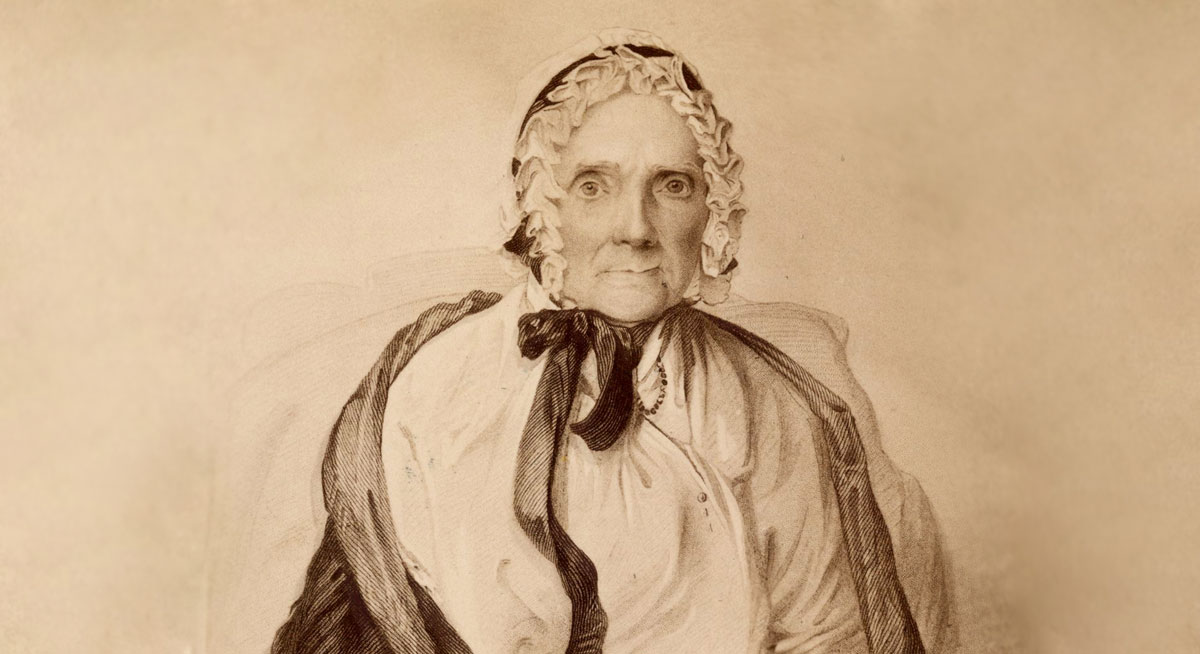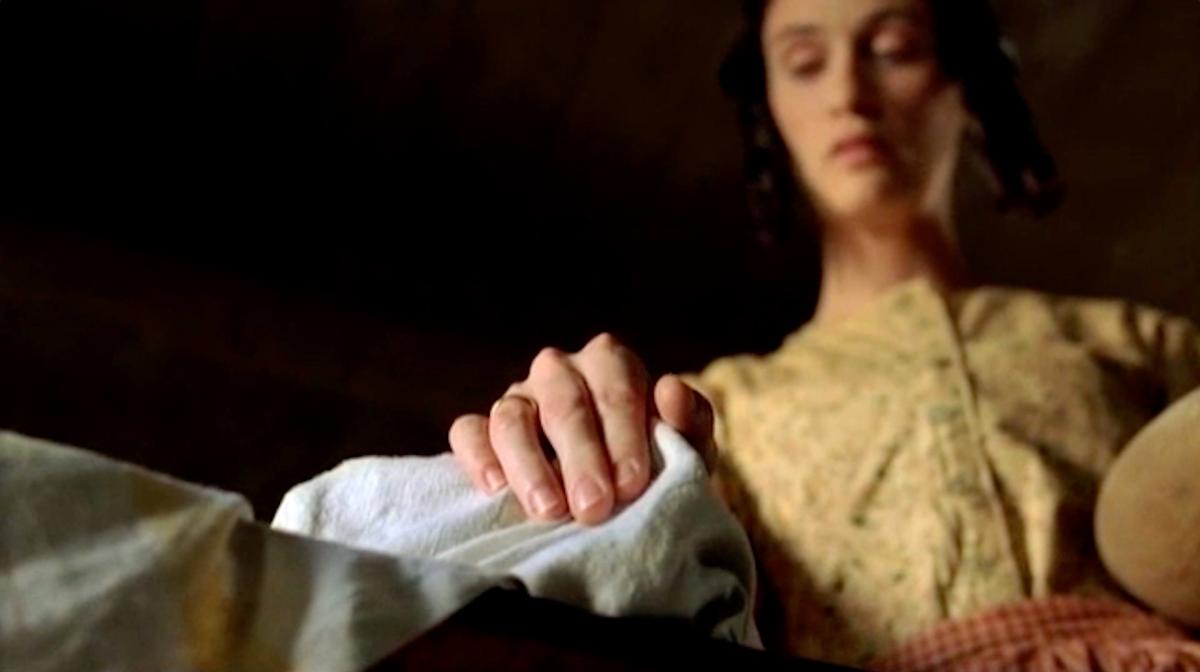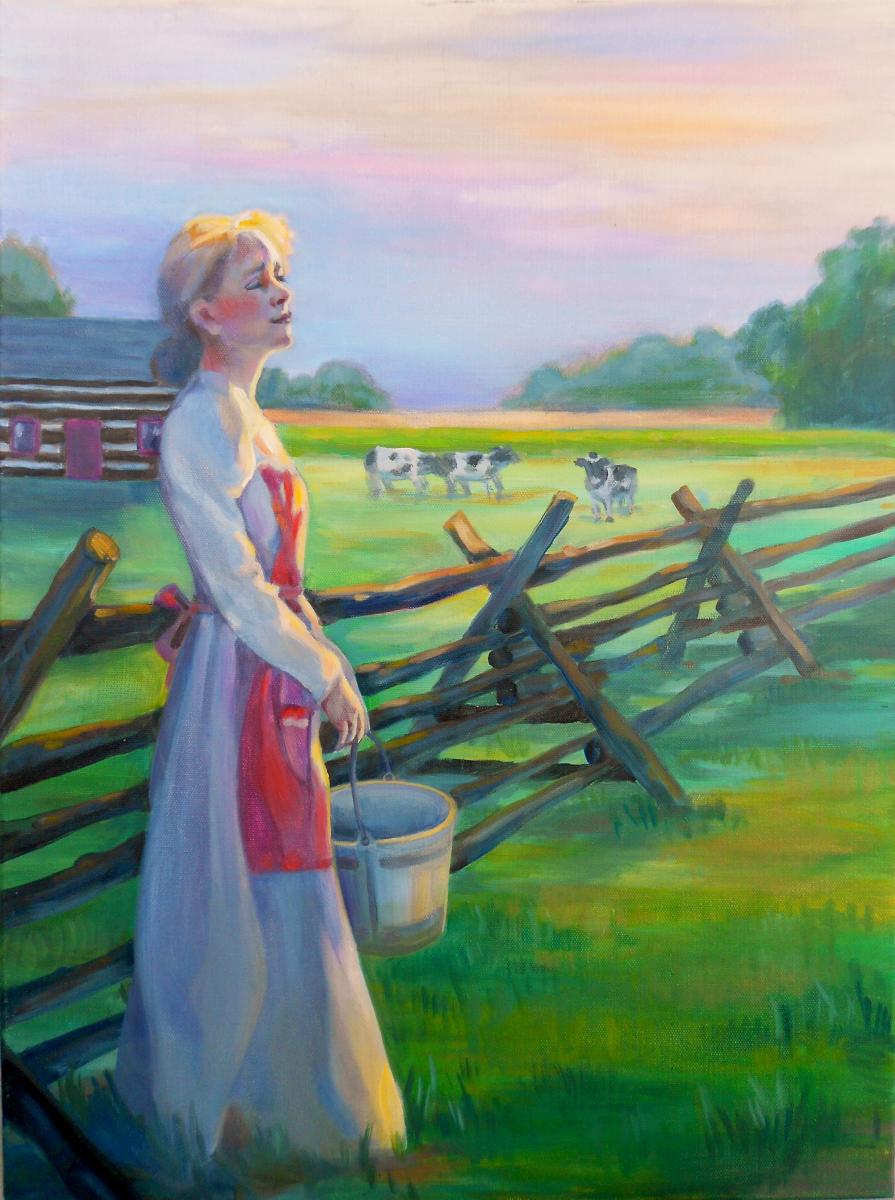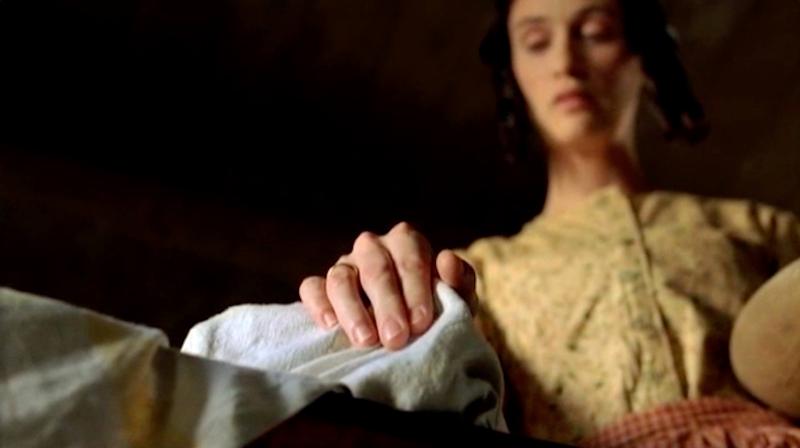You are here
5 Women Who Are Witnesses of the Physical Golden Plates
Attacks against the Book of Mormon have experienced a kind of “mission creep” since its publication in 1830.[1] Critics began by labeling the book “bungling and stupid,”[2] Joe Smith a “perfect ignoramus,”[3] and they claimed “any blunderhead, with the Bible at his side, might have written [it] . . .”[4]
As Church membership mushroomed, and it became clear the Book of Mormon is pretty complex, a second theory necessarily emerged: namely a vast conspiracy with multiple authors nefariously re-working a plagiarized text.[5] This so-called Solomon Spalding-forgery theory flourished for decades, but lost favor in 1884 when the original Spalding manuscript (said to have been forged) was re-discovered. Spalding’s novella and the Book of Mormon were found to have as much in common as John’s Revelation and Don Quixote.[6]
More recently, critics have lauded Joseph Smith as a “religious genius”[7]—evil genius to some[8]— whose book teems with “impressive literary, theological, psychological, and spiritual qualities,”[9] and whose delusionary motives for writing it are best explained by esoteric psychoanalysis.[10] Whether Joseph was an ignoramus, madman, or an evil religious genius, critics maintain that the Book of Mormon cannot be a historical record taken from golden plates.
But, what never seems to go away for Book of Mormon critics are those pesky witnesses. You try spraying, scrubbing, and still we’re left with so many persons whose testimonies of the physicality of the golden plates, angels, and other artifacts—never wavered. Some left the Church. Some returned. But none—nada, zip—ever denied their testimony, even to the grave.[11]
A better game plan, many critics decided, was to play ignorant than acknowledge the sheer quantity of narratives. Better yet, explain ‘em away with bizarre assertions like Joseph Smith “hypnotizing” the whole gullible lot.[12] It would be easier if only these witnesses weren’t so…so…so detailed, unscripted, articulate, and passionate![13]
What’s intriguing is that some of our most profound accounts of those who saw, felt, and hefted sacred artifacts are from women. Don’t misunderstand. It’s not gender that makes them worth highlighting, although in this culturally-charged era that certainly doesn’t hurt. Several examples arguably rival the Testimony of the Three and Eight in significance. I present these women and their accounts in no particular order.

1. Lucy Mack Smith
Most members know of Mother Smith’s in-depth biography of Joseph Smith. What they may not know is that she dictated it mere months after the deaths of Joseph, Hyrum, and Samuel. She found comfort in her grief by finally putting these events on paper. Regarding the project, she wrote, “I have told over many things pertaining to these matters to different persons . . . [and] indeed have almost destroyed my lungs.”[14] Now that’s commitment and dedication!
In her history, Lucy Mack Smith testified repeatedly of her physical proximity to the golden plates and other artifacts recovered at Cumorah.[15] She could hardly have avoided the plates, even covered in cloth, sitting in the open on her front room table, as she describes. She may have also viewed them uncovered, as reported by a British clergyman who’d lost many parishioners to Mormon missionaries. This pastor’s book, documenting his visit to Nauvoo in 1842, is otherwise a premeditated “hit job” against the Church, but one face-to-face quote from Lucy Mack Smith is noteworthy:
I have seen and handled the golden plates. They are about eight inches long, and six wide; some of them are sealed together and not to be opened, and some of them are loose. They are all connected by a hole which passes through a ring at the end of each plate, and are covered with letters beautifully engraved.[16]
This book is replete with laughable efforts to disseminate “fake news,” but this statement, if remotely accurate, is a testament of the extraordinary trust Lucy Mack Smith had earned from her son, and the Lord.
Mother Smith was no delicate flower when it came to bearing testimony either. From a ship’s deck she shouted to an anti-Mormon heckler on the bank:
[It] was brought forth by the power of God and translated by the same power, and if I could make my voice sound as loud as the trumpet of Michael, the archangel, I would declare the truth from land to land and from sea to sea and echo it from isle to isle, until everyone in the whole family of man was left without excuse—for all should hear the truth of the gospel of the Son of God![17]
For more information about this singular figure in LDS history, go here.
2. Katherine Smith Salisbury
Joseph’s family—before and after the martyrdom—is a fascinating saga of faith, unity, and heartbreak. In their later decades I also perceive a tender strain of melancholy. Joseph was survived by his mother, his brother, William, and three sisters: Sophronia, Katherine, and young Lucy. Not one single family member (13 in all, two infants passing away in childbirth) expressed a whisper of doubt about the Book of Mormon’s authenticity.
I suspect every family member saw the covered plates, yet they reverenced Joseph’s charge not to view them directly, a privilege later granted to Joseph Sr., Hyrum, and Samuel. Several Smiths described “hefting” or moving them about.
One of these was Katherine, who was just 14 when Joseph first brought them home, breathless and injured after fighting off multiple ruffians intent on stealing them. Apparently, Katherine testified often of their physicality (specifically their “heaviness”).[18] Her grandson reported that when Joseph first brought them home, she personally, “took the plates from him and laid them on the table temporarily. . .” until Joseph had sufficiently recovered.[19]

3. Emma Smith
The essential—even phenomenal—role Emma played in bringing forth the Book of Mormon has been re-examined on many fronts. Moroni first instructed Joseph to enlist his oldest brother, Alvin, to help him recover the plates. After Alvin’s untimely death, Joseph was told his replacement would be revealed by revelation.[20] That person was Emma Hale.
At midnight on the appointed date, Joseph and his new bride arrived by wagon at the base of the hill. Joseph climbed alone in the dark, returning hours later with the plates under his coat. Whatever his efforts to conceal them, Emma wasn’t so dull or distracted that she failed to notice he carried something substantial.[21]
After the plates were removed to the Hale home in Harmony, PA, Emma acted as the volume’s first scribe.[22] An experienced school teacher, she said that at this time her husband “…could neither write nor dictate a coherent and well-worded letter; let alone dictating a book like the Book of Mormon.”[23] Her insights are considered invaluable in helping to understanding the translation process.[24]
Emma felt obliged at times to “lift and move [the covered plates] when she swept and dusted . . .”[25] though she would not “uncover them to look . . .”.
I once felt of the plates,” she admitted, “as they thus lay on the table, tracing their outline and shape. They seemed to be pliable like thick paper, and would rustle with a metallic sound when the edges were moved by the thumb, as one does sometimes thumb the edges of a book. [26]
Emma Smith, the “Elect lady,”[27] stands as a compelling witness of the plates’ physicality. Also of the Nephite Interpreters and other instruments of translation.[28] To read more about her contribution, go here.
4. Lucy Harris
Martin Harris’s wife, a witness? This might seem strange, especially to those who’ve always thought of her as a “villain” for browbeating her husband and possibly pilfering the lost 116 pages. Yet Lucy Mack Smith recounts an engrossing episode of how, early on, Lucy Harris offered to help Joseph publish the manuscript—but with conditions: “[Only] if I can get a witness that you do speak the truth.” Joseph rebuffed these conditions, proclaiming that only God could give such authorization, which “highly displeased” Mrs. Harris. Yet Mother Smith goes on to tell how, the very next day, Martin’s wife returned in a much-altered state-of-mind.
[Mrs. Harris] said that a personage had appeared to her during the previous night, who told her, that, inasmuch as she had disputed the servant of the Lord, and said that his word was not to be believed, and asked him many improper questions, that she had done that which was not right in the sight of God. After which he said, ‘Behold here are the plates. Look upon them and believe.’ She then described the record very minutely…[29]
She gave Joseph $28, certifying Lucy Harris as the first recorded donor to the Book of Mormon’s translation. Thus, Mother Smith recasts Mrs. Harris as an unwitting witness of Book of Mormon’s veracity and physicality.

5. Mary Musselman Whitmer
The account of Mary Whitmer, matriarch of the Whitmer family, may be the most remarkable of all, not only because its details are practically identical to what was experienced by the “Three Witnesses,” but because it pre-dates that affidavit by several months.
Mary Whitmer’s encounter is described in three separate accounts. The most famous is from her son, David:
…my mother was going to milk the cows, when she was met out near the yard by the same old man (judging by her description of him) [whom David had seen on the roadside in a prior incident] who said to her, ‘You have been very faithful and diligent in your labors, but you are tired because of the increase of your toil, it is proper therefore that you should receive a witness that your faith may be strengthened.’ Thereupon he showed her the plates.[30]
John C. Whitmer recalled this further tidbit from his grandmother’s story:
[The personage] turned the plates over, leaf after leaf, and also showed her the engravings upon them; after which he told her to be patient and faithful in bearing her burden a little longer, promising that if she would do so, she should be blessed; and her reward would be sure, if she proved faithful to the end. The personage then suddenly vanished with the plates, and where he went, she could not tell.[31]
More insights are offered by another granddaughter, who said Mary Whitmer was irritated when Joseph and Oliver took breaks from translating and “skated rocks on a pond.” “[She] thought they might just as well carry her a bucket of water or chop a bit of wood . . .” and planned to order them out of her house. Such anxieties were relieved by Moroni’s timely visitation.[32]
It would be remiss not to acknowledge that additional men, such as Josiah Stowell and Alva Beman, bore testimony of having physical contact with the golden plates. To learn more about the circumstances that permitted any person to view the records, visit here.
I’m not the first to underline the contribution of women as witnesses of the Restored Gospel and the Book of Mormon, and I sincerely hope I’m not the last.[33] There are many unsung heroes and heroines who’ve helped to build God’s Kingdom in spectacular ways. It’s a privilege to spotlight such examples and I will seek to do so whenever possible.
[1] Daniel C. Peterson, “Editor’s Introduction: ‘In the Hope That Something Will Stick’: Changing Explanations for the Book of Mormon,” FARMS Review 16, no. 2 (2004): xi–xv.
[2] “The Mormons,” Religious Herald, April 9, 1840; cited in Terryl L. Givens, The Viper on the Hearth: Mormons, Myths, and the Construction of Heresy (New York: Oxford University Press, 1997), 86.
[3] David I. Burnett, Evangelical Inquirer, 7 March 1831, 218, 219, in Kirkham, A New Witness for Christ in America, 2 vols. (Salt Lake City, UT: self-published, 1942, 1951), 2:112.
[4] Daniel P. Kidder, Mormonism and the Mormons (New York: Carlton & Porter, 1842), 330, in Kirkham, New Witness, 2:199.
[5] Eber D. Howe, Mormonism Unvailed (Painesville: by the author, 1834), 100, in Kirkham, New Witness, 2:131; Orvilla S. Belisle, The Prophets; or, Mormonism Unveiled (Philadelphia: Smith, 1855), 53–55, Kirkham, New Witness, 2:202–3.
[6] L. L. Rice, letter, 28 March 1885, in Charles A. Shook, The True Origin of the Book of Mormon (Cincinnati: Standard, 1914), 68, in Kirkham, New Witness, 2:210. For more on the Spaulding theory, see Matthew Roper, “The Mythical ‘Manuscript Found’,” FARMS Review 17, no. 2 (2005): 7–140; Matthew Roper, “Myth, Memory, and ‘Manuscript Found’,” FARMS Review 21, no. 2 (2009): 179–223; Matthew Roper and Paul J. Fields, “The Historical Case against Sidney Rigdon’s Authorship of the Book of Mormon,” Mormon Studies Review 23, no. 1 (2011): 113–125.
[7] Harold Bloom, The American Religion: The Emergence of the Post-Christian Nation (New York: Simon and Schuster, 1992), 80, 96.
[8] Loftes Tryk, The Best Kept Secrets in the Book of Mormon (Redondo Beach, CA: Jacob’s Well Foundation, 1988).
[9] Dan Vogel and Brent Lee Metcalfe, “Editors’ Introduction,” in American Apocrypha: Essays on the Book of Mormon, ed. Dan Vogel and Brent Lee Metcalfe (Salt Lake City: Signature Books, 2002), vii.
[10] Fawn M. Brodie, No Man Knows My History, 2nd ed. (New York: Knopf, 1971), ix, in Kirkham, New Witness, 2:420; James Black, New Forms of the Old Faith (London: Nelson and Sons, 1948), 248. Black’s analysis was that Smith was “not a deceiver, rather a person with a dissociated personality.”
[11] Steven C. Harper, “The Eleven Witnesses,” in The Coming Forth of the Book of Mormon: A Marvelous Work and a Wonder, ed. Dennis L. Largey, Andrew H. Hedges, John Hilton III, and Kerry Hull (Salt Lake City and Provo, UT: Deseret Book and Religious Studies Center, Brigham Young University, 2015), 117–132.
[12] Dan Vogel, “The Validity of the Witnesses’ Testimonies,” in American Apocrypha, 79–121
[13] Stephen Smoot writes: “From a historiographical perspective, skeptics of Joseph Smith who wish to dismiss the Prophet’s claims out of hand must scale a much more difficult mountain than they have perhaps supposed. For they not only have to dismiss the testimony of Joseph Smith but must also dismiss the testimony of his wife Emma and the rest of the Smith family, Oliver Cowdery, David Whitmer and the rest of the Whitmer family, Martin Harris, Joseph Knight, Josiah Stowell, and many others in order to maintain the hermeneutic.” Stephen O. Smoot, “Telling the story of the Coming Forth of the Book of Mormon,” Interpreter: A Journal of Mormon Scripture 19 (2016), 68–72.
[14] Lucy Mack Smith, Letter to William Smith, Nauvoo, Ill, 23 Jan. 1845, CHL.
[15] Daniel C. Peterson, “Not Joseph’s, and Not Modern,” in Echoes and Evidences of the Book of Mormon, ed. Donald W. Parry, Daniel C. Peterson, and John W. Welch (Provo, Utah: FARMS, 2002), 209–210. Regarding other artifacts recovered from Cumorah, Lucy Mack Smith wrote of the Nephite Interpreters, or Urim and Thummim, as follows: “I . . . took the article in my hands and, examining it with no covering but a silk handkerchief, found that it consisted of two smooth three-cornered diamonds set in glass, and the glasses were set in silver bows connected with each other in much the same way that old-fashioned spectacles are made.” Regarding the Nephite breastplate, she wrote: “he [Joseph] handed me the breastplate spoken of in his history. It was wrapped in a thin muslin handkerchief; so thin that I could see the glistening metal, and ascertain <feel> its proportions without any difficulty: It was concave on one side and convex on the other; and extended from the neck downwards as far as the centre of the stomach of a man of extraordinary size. It had four straps of the same material for the purpose of fastening it to the breast: two of which ran back to go over the shoulders, and the other two were designed to fasten to the hips. These straps [p. 114] were just the width of two of my fingers; (for I measured them); and they had holes in the end of them for convenience in fastening . . . were just the width of two of my fingers; (for I measured them); and they had holes in the end of them for convenience in fastening [stricken text is from the original manuscript written at Mother Smith’s dictation. Her mention of ‘glistening metal’ was retained for the sake of interest]” Lucy Mack Smith, Biographical Sketches of Joseph Smith the Prophet and His Progenitors for Many Generations (Liverpool, UK: S. W. Richards, 1853), 99–147.
[16] Henry Caswall, The City of the Mormons; or, Three Days at Nauvoo, in 1842, 2nd ed., revised and enlarged, (London, UK: J. G. F. & J. Rivington, 1843), 27.
[17] Gracia N. Jones, Emma and Lucy (American Fork, UT: Covenant Communications, 2005), 75–84.
[18] “The Prophet’s Sister Testifies She Lifted the B of M Plates,” Messenger, Berkeley, California, October 1954, 1, 6; see also Mary Salisbury Hancock, “The Three Sisters of the Prophet Joseph Smith,” Saints’ Herald 101, Jan. 25, 1954, 10-11, 23.
[19] “The Prophet’s Sister Testifies She Lifted the B of M Plates,” 1, 6.
[20] Dean Jesse, “Joseph Knight’s Recollection of Early Mormon History,” BYU Studies17, no. 1 (1976): 2. This story was reaffirmed in the recollections of his sister, Katherine Smith Salisbury, with Moroni explaining, “You will know her when you see her.” Kyle R. Walker, “Katherine Smith Salisbury’s Recollections of Joseph’s Meetings with Moroni,” BYU Studies Quarterly 41, no. 3 (2002): 14.
[21] Gracia N. Jones, Emma and Lucy
[22] Amy Easton-Flake and Rachel Cope, “A Multiplicity of Witnesses: Women and the Translation Process,” in The Coming Forth of the Book of Mormon: A Marvelous Work and a Wonder, ed. Dennis L. Largey, Andrew H. Hedges, John Hilton III, and Kerry Hull (Salt Lake City and Provo, UT: Deseret Book and Religious Studies Center, Brigham Young University, 2015), 144.
[23] “Last Testimony of Sister Emma,” Saints’ Herald, 1 Oct. 1879, p. 290
[24] Edmund C. Briggs, “A Visit to Nauvoo in 1856,” Journal of History, Jan. 1916, p. 454.
[25] John W. Welch, “The Miraculous Timing of the Translation of the Book of Mormon,” in Opening the Heavens: Accounts of Divine Manifestations, 1820–1844, ed. John W. Welch, 2nd edition (Salt Lake City and Provo, UT: Deseret Book and BYU Press, 2017), 145, doc. 43.
[26] “Last Testimony of Sister Emma,” 290.
[27] Doctrine and Covenants 25:5.
[28] “Emma Smith Bidamon to Emma Pilgrim, 27 March 1870,” in Early Mormon Documents, 1:532; “Lucy Smith History, 1845,” 370–71; Roger Nicholson, “The Spectacles, The Stone, The Hat, and The Book: A Twenty-First Century Believer’s View of the Book of Mormon Translation,” Interpreter: A Journal of Mormon Scripture 5 (2013): 121–190
[29] Lucy Mack Smith, History, 1845; handwriting of Howard Coray and Martha Jane Knowlton Coray; 337 pages; CHL. Joseph Smith Papers, 127.
[30] David Whitmer, interview with Orson Pratt and Joseph F. Smith, September 1878, published 16 November 1878 in the Deseret News, reproduced by Dan Vogel in Early Mormon Documents, 5:51-52 (Salt Lake City, Utah: 2003)
[31] John C. Whitmer, 1878 account, as recorded by Andrew Jenson (see his Latter-Day Saint Biographical Encyclopedia 1:283, Salt Lake City, Utah: 1901).
[32] “Elvira Pamela Mills”, Cox Bulletin II (1958), written by Orville Cox Day (O C Day). Mary Musselman Whitmer’s recorded encounters are compiled for individual review in Royal Skousen, “Another Account of Mary Whitmer’s Viewing of the Golden Plates,” Interpreter: A Journal of Mormon Scripture 10 (2014): 35–44.
[33] In particular, note Easton-Flake and Cope, “A Multiplicity of Witnesses: Women and the Translation Process,” in The Coming Forth of the Book of Mormon, 133–153. See also, Janiece Johnson and Jennifer Reeder, The Witness of Women: Firsthand Experiences and Testimonies from the Restoration (Salt Lake City, UT: Deseret Book, 2017).
Subscribe
Get the latest updates on Book of Mormon topics and research for free



